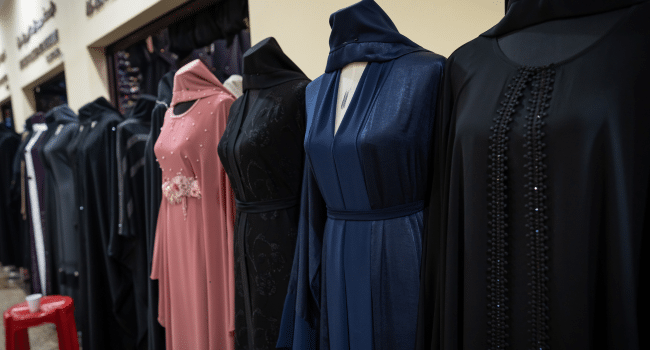The Ramadan abaya is a beautiful and meaningful garment that holds a special place in the lives of many women during the holy month of Ramadan. Known for its modest design and graceful elegance, the abaya is a staple in Islamic culture and fashion, providing comfort and style while respecting religious traditions. During Ramadan, when spirituality, prayer, and community take center stage, the abaya becomes even more significant, offering a practical and stylish way to dress for various occasions, from attending prayers at the mosque to hosting Iftar gatherings with family and friends.
One of the key benefits of wearing a Ramadan abaya in today’s modern world is its ability to blend tradition with contemporary fashion. The abaya’s modest design aligns perfectly with the values of Ramadan, promoting humility and simplicity. It is also incredibly versatile, allowing women to go about their daily routines while staying true to their cultural and religious practices. Whether running errands, attending work, or participating in evening Taraweeh prayers, the abaya ensures comfort and elegance without compromising modesty.
Another advantage of the Ramadan abaya is the wide variety of styles available. Over the years, designers have reimagined this traditional garment, offering women numerous options to suit their personal preferences. Classic black abayas remain a popular choice due to their timeless appeal and simplicity. However, modern Ramadan abayas now come in a range of colors, including soft pastels, earthy tones, and even vibrant hues. These contemporary designs often feature intricate embroidery, delicate lacework, and embellishments like beads or sequins, making them perfect for festive Iftar dinners and social gatherings.
The fabrics used for Ramadan abayas also contribute to their practicality and charm. Lightweight materials like chiffon, crepe, and cotton are ideal for daytime wear, especially in warmer climates, as they provide comfort and breathability. For evening events, luxurious fabrics such as silk or velvet add a touch of sophistication. Some abayas are designed with flowing sleeves, layered panels, or open-front styles, offering a modern twist to the traditional silhouette while maintaining modesty.
Across the globe, women wear Ramadan abayas in ways that reflect their culture and individual style. In the Middle East, women often pair their abayas with matching hijabs or scarves, creating a coordinated and polished look. In South Asia, abayas are sometimes worn over brightly colored outfits, blending cultural traditions with modern flair. In Western countries, many women have embraced the abaya as a symbol of modest fashion, styling it with contemporary accessories like statement jewelry, belts, or stylish footwear.
Wearing a Ramadan abaya also fosters a sense of unity and connection among Muslim women. During Ramadan, when communities gather for prayers, meals, and charity, the abaya becomes a shared expression of faith and togetherness. It allows women to focus on the spiritual aspects of the month without worrying about their attire, as it is both appropriate and effortlessly elegant.
In conclusion, the Ramadan abaya is much more than a piece of clothing; it is a representation of faith, culture, and timeless beauty. Its ability to combine tradition with modern fashion ensures that it remains a beloved choice for women worldwide. With its wide range of styles, fabrics, and colors, the Ramadan abaya offers comfort and elegance, making it an ideal garment for the holy month. As women continue to embrace its versatility and significance, the Ramadan abaya stands as a testament to the enduring charm of modest fashion in the modern world.
